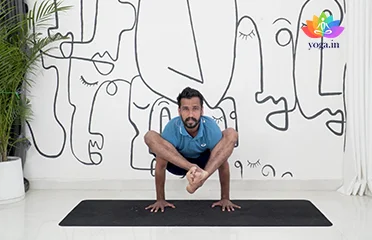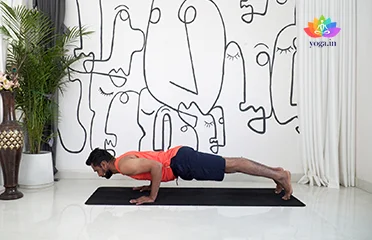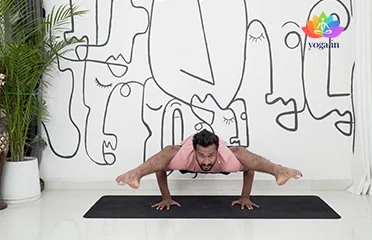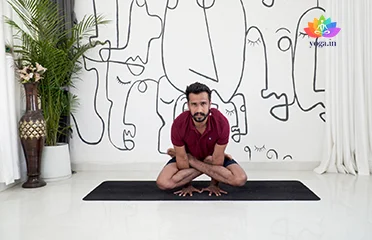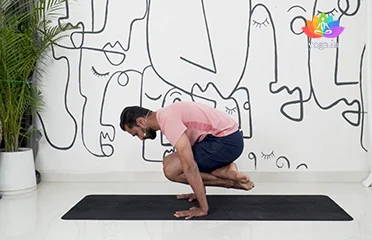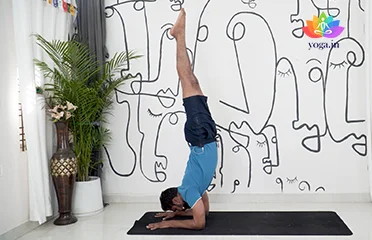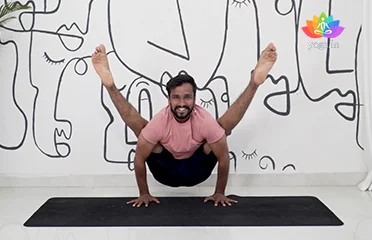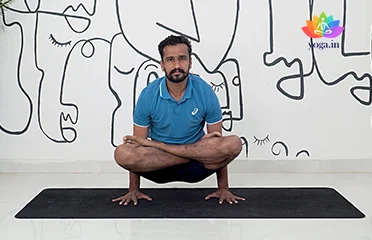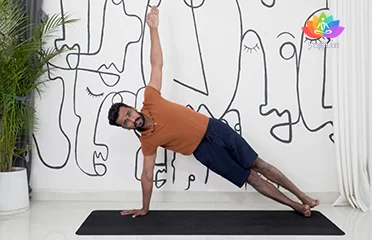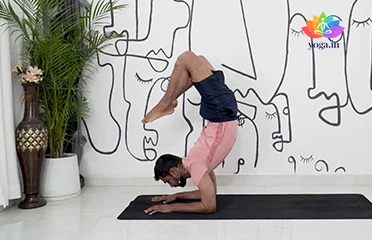Bhujapidasana (Shoulder-Pressing Pose)
भुजपीडासन / Shoulder-Pressing Pose
The Sanskrit name is derived from Bhuja (भुज) meaning arm/shoulder, Pida [�K]
Chaturanga Dandasana (Low Plank Pose)
चतुरङ्ग दण्डासन / Low Plank Pose
The Sanskrit name is derived from Chatur (चतुर) meaning four, Anga (अङ्ग) [�K]
Eka Pada Koundinyasana (Sage Kaundinya&#
एक पाद कौण्डिन्यासन / Sage Kaundinya's Pose
The Sanskrit name is derived from Eka (एक) meaning one, Pada (पाद) [�K]
Kukkutasana (Cockerel Pose)
कुक्कुटासन / Cockerel Pose
The Sanskrit name is derived from Kukkut (कुक्कुट) meaning rooster [�K]
Lolasana (Pendant Pose)
लोलासन / Pendant Pose
The Sanskrit name is derived from Lolā (लोला) meaning dangling posture [�K]
Pincha Mayurasana (Peacock Feather Pose)
पिंचमयूरासन / Peacock Feather Pose
The Sanskrit name is derived from Pincha (पिंच) meaning feathered, Mayur [�K]
Tittibhasana (Firefly Pose)
तिट्टीभासन / Firefly Pose
The Sanskrit name is derived from Tittibha (तिट्टीभा) meaning [�K]
Tulasana (Scale Pose)
तुलासन / Scale Pose
The Sanskrit name is derived from Tula (तुला) meaning balance and asana [�K]
Vasishtasana (Side Plank Pose)
वसिष्ठासन / Side Plank Pose
The Sanskrit name is derived from Vasistha (वसिष्ठा) meaning wealthy [�K]
Vrischikasana (Scorpion Pose)
वृश्चिकासन / Scorpion Pose
The Sanskrit name is derived from Vrischik (वृश्चिक) meaning scorpion [�K]
Arm Balance Yoga Poses – Find Your Inner Strength and Balance
Arm balance poses are challenging yet rewarding asanas that require strength, balance, and core engagement. These inverted postures offer a unique perspective, building confidence and body awareness. While they may seem intimidating, with consistent practice and proper alignment, anyone can progress towards mastering these poses.
Benefits of Arm Balance Poses
- Increased strength: Arm balances build upper body, core, and leg strength.
- Improved balance: Regular practice enhances balance and coordination.
- Enhanced body awareness: These poses cultivate a deeper understanding of your body’s alignment.
- Mental focus: Arm balances demand concentration and mental clarity.
- Boosted confidence: Overcoming the challenges of arm balances can significantly boost self-esteem.
List of Arm Balance Yoga Poses
- Chaturanga Dandasana (Four-Limbed Staff Pose): This foundational pose strengthens the arms, core, and shoulders, preparing the body for more advanced arm balances.
- Bakasana (Crow Pose): This classic arm balance involves balancing on the forearms with knees bent and tucked into the upper arms. It requires core engagement and upper body strength.
- Adho Mukha Vrksasana (Handstand): This advanced pose requires significant upper body strength, core engagement, and leg strength. It’s essential to practice with a wall or a spotter initially.
- Parsva Bakasana (Side Crow): A variation of crow pose, this pose challenges balance and core stability while requiring flexibility in the hips.
- Eka Pada Koundinyasana I (One-Legged King Dancer): This pose demands strength, balance, and flexibility. It involves lifting one leg while maintaining balance on the arms.
- Tittibhasana (Firefly Pose): This challenging pose requires core strength, upper body strength, and flexibility. It involves balancing on the hands with legs extended straight forward.
Tips for Practicing Arm Balance Yoga Poses
- Build strength gradually: Incorporate preparatory poses like plank, downward-facing dog, and core exercises to build strength.
- Engage the core: A strong core is essential for stability in arm balances.
- Find your balance point: Experiment with different hand and foot placements to find your optimal balance point.
- Practice regularly: Consistent practice is key to improving balance and strength.
- Start with props: Use props like blocks or a wall for support as needed.
Common Challenges and How to Overcome Them
- Fear of falling: Start with easier variations and gradually progress. Focus on building strength and confidence.
- Lack of upper body strength: Incorporate arm-strengthening exercises like push-ups and planks into your routine.
- Balance issues: Practice core-strengthening exercises and focus on finding your center of gravity.
- Wrist pain: Build wrist strength with wrist circles and hand strengthening exercises.


